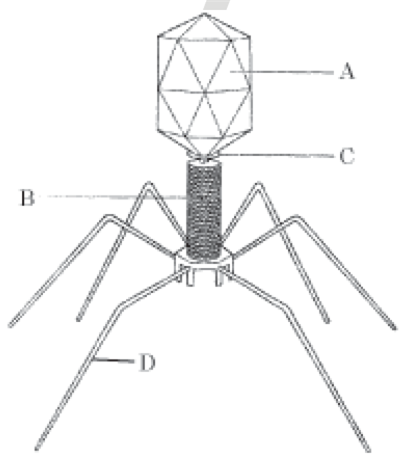Transgenic plants are
produced by a somatic embryo in an artificial medium
generated by introducing foreign DNA into a cell and regenerating a plant from that cell
Produced by protoplast fusion in the artificial medium
Produced by protoplast fusion in the artificial medium
B.
generated by introducing foreign DNA into a cell and regenerating a plant from that cell
The plants obtained through genetic engineering contain a gene or genes usually from an unrelated organism, such genes are called transgenes and the plants containing transgenes are known as transgenic plants. These plants are often called as genetically modified or GM crops, eg, Flavor saur transgenic for identification, expressing the gene activity in time to produced several chemicals likes fatty acids sugars cellulose, rubber, etc.
Gel electrophoresis is used for
cutting of DNA into fragments
separation of DNA fragments according to their size
construction of recombinant DNA by joining with cloning vectors
construction of recombinant DNA by joining with cloning vectors
B.
separation of DNA fragments according to their size
When genomic DNA extracted from any tissue of a plant or animal species is digested with a restriction enzyme, it is cleaved into segments. The segments of different size can be separated through gel electrophoresis. Gel electrophoresis involves the movement of fragments or molecules from a well created on edge of the gel.
What is not true for genetic code?
A condon in mRNA is read in a non-contiguous fashion
It is nearly universal
It is degenerate
It is degenerate
A.
A condon in mRNA is read in a non-contiguous fashion
The general features of genetic code are:
(i) The genetic code is written in linear form, using the ribonuclotide bases that compose mRNA molecule as letters.
(ii) Each word of codon consists of three letters, ie, the codon triplet.
(iii) The genetic code inside the cell medium is said to be non-ambiguous.
(iv) The code is degenerate, ie, a given amino acid can be specified by more than one codons.
(v) The codon contains start and stops signals.
(vi) The code is said to be commaless.
(vii) The code is said to be commaless.
Given below is the diagram of a bacteriophage in which one of the options, all the four parts A, B, C and D are correct?
|
A |
B |
C |
D |
|
Tail fibres |
Head |
Sheath |
Collar |
|
A |
B |
C |
D |
|
Sheath |
Collar |
Head |
Tail fibres |
|
A |
B |
C |
D |
|
Head |
Collar |
Sheath |
Tail fibres |
|
A |
B |
C |
D |
|
Head |
Collar |
Sheath |
Tail fibres |
C.
|
A |
B |
C |
D |
|
Head |
Collar |
Sheath |
Tail fibres |
Plasmids are the extrachromosomal DNA found in bacterial cells. These are commonly used as vectors in genetic engineering programmes because these have the capacity of binding with eukaryotic DNA.
A bacteriophage is a virus that is parasitic within a bacterium. These also, are the important tools in genetic engineering s cloning vectors.
Semiconservative replication of DNA was first demonstrated in
Drosophila melanogaster
Escherichia Coli
Streptococcus pneumoniae
Streptococcus pneumoniae
B.
Escherichia Coli
Semiconservative replication of DNA was first demonstrated in E.coil. According to the semiconservative mode proposed by Waston and Crick, each strand of the two double helices formed would have one old and one new strand. The semiconservative nature of DNA of replication was proved by the experiment of Meselson and Stahl (1958).
